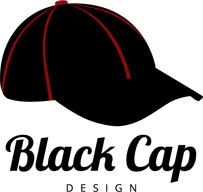If you’re like most people, you’ve been thinking about having a website developed for a while. And, like most people, you’re wondering where to start.
We’ve compiled a list of 5 important things to consider to help you get started. Answer these questions and you’ll be well on your way.
Make sure to jot down your answers. It will help when it comes time to consult with us about planning the construction of your site.
1. What is the purpose of your site?
Why do you want or need a website?
Most sites serve multiple purposes. They exist to deliver a mix of social, economic, artistic, political and educational messages.
For example, a site’s main goal might be to sell t-shirts. But it might also specialize in shirts bearing a particular political message. The same site might also have a blog or e-newsletter with an educational bent.
List the messages you want to get across – from most to least important.
2. How will you communicate your message?
There are various tools for communicating your message online. Written content is perhaps the most obvious. Information can also be conveyed through images, as well as video and sound files.
Content tends to be the greatest hurdle for people who have never had a site developed before. In general, people tend to under-estimate the amount of time and work involved in creating or gathering content for a website.
The quality of your content will go a long way to making or breaking the success of your site.
Ideally, you should create and organize your content before the site is designed. That way, the content can help shape the look and feel of the finished site.
At Black Cap Design we can help with technical writing, editing, as well as massaging your content to optimize it for search (SEO). For more information about our Technical Writing and Content Development services visit our Management Solutions page or the blog post “What is SEO? How to Get Found by Search Engines“.
3. Who is your intended audience?
What you say and how you say it will depend a lot on your target market. The language, type of imagery and layout used in building the site will depend a lot on the age, gender, culture and economic status of the typical visitor to your site.
Knowing a few things about your intended audience will go a long way in helping refine the site to meet the needs and expectations of your end users.
4. What do you like and dislike about websites?
It’s important to know your likes and dislikes when it comes to websites. Most sites are used as tools for marketing the skills, products or talents of their owners.
If your website is marketing you, your business or organization, it should reflect aspects of your personality (or that of your business or organization). This can be achieved through the effective use of light, colour, shapes, imagery — even your choice of fonts.
Spend some time visiting sites that have something in common with yours. Make a list of the ones you like and those you don’t and make a note of what you like and dislike about them. Bookmark these sites so you can share them with your developer. This will go a long way in helping you communicate to us the look and feel you’re aiming for.
5. What will you call the site?
One of the first things you should do when planning your site is to consider a domain name. Finding a logical and easy–to–use name is becoming more and more challenging with the rapid growth of the Web.
Stick with something short and memorable. Stay away from acronyms if you can (unless yours is very short and memorable).
You can find out whether the name you’re interested in is available at any domain registration website, such as namespro.ca.
For more information on domain names and how to register yours, read our blog post, “Domain Registration vs Hosting: What’s the Difference?“, or contact us at in**@bl************.com for assistance.
